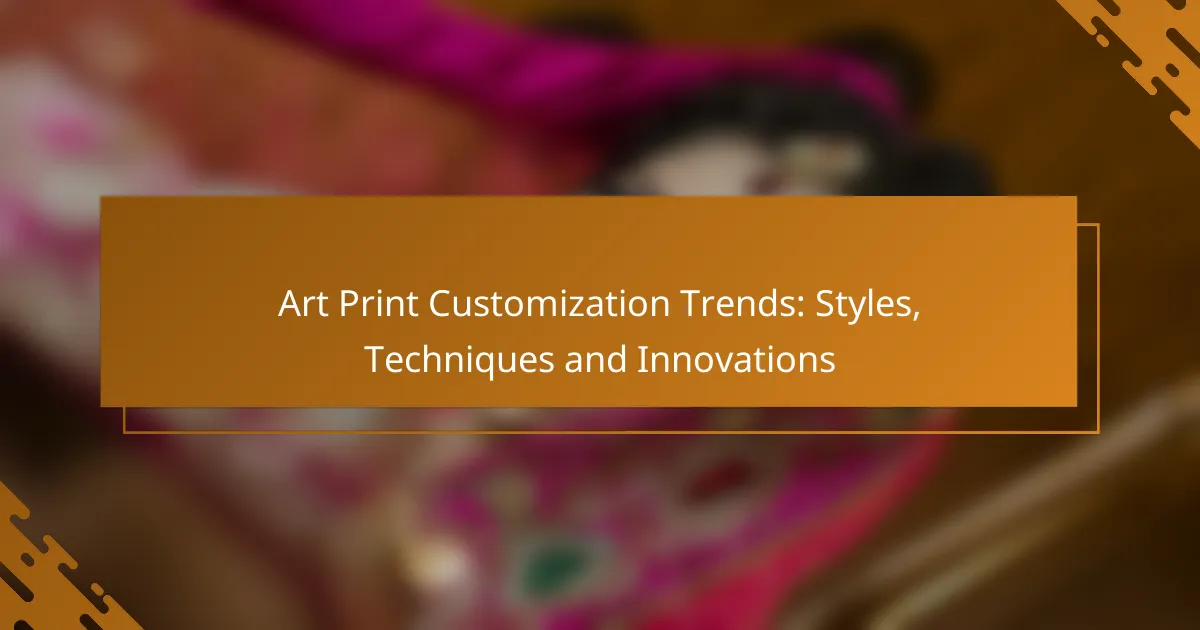Custom sizes offer tailored solutions that enhance both functionality and aesthetic appeal, allowing for precise adjustments that standard dimensions may not accommodate. This approach is particularly beneficial in industries like furniture manufacturing, textile design, and architecture, where specific needs and preferences dictate the requirements. By understanding your unique constraints and intended applications, you can select the ideal custom size to ensure optimal performance and satisfaction.

What are the benefits of custom sizes?
Custom sizes provide tailored solutions that meet specific requirements, enhancing functionality and aesthetic appeal. They allow for precise adjustments that standard sizes often cannot accommodate, resulting in better overall performance and satisfaction.
Enhanced fit for specific needs
Custom sizes ensure that products fit particular dimensions or specifications, which is crucial in various industries such as furniture, clothing, and construction. For instance, a custom-sized sofa can perfectly fit a unique living space, maximizing comfort and usability.
When designing for specific needs, consider the measurements of the area or the intended use. This attention to detail can significantly improve the effectiveness of the product and reduce the likelihood of returns due to poor fit.
Improved customer satisfaction
Offering custom sizes often leads to higher customer satisfaction as clients receive products that meet their exact preferences. Satisfied customers are more likely to become repeat buyers and recommend the product to others, enhancing brand loyalty.
To boost satisfaction, engage with customers during the design process. Gathering feedback on size preferences can help tailor offerings and ensure the final product aligns with their expectations.
Increased design flexibility
Custom sizes allow designers to explore creative solutions that standard sizes may limit. This flexibility can lead to innovative designs that stand out in the market, catering to niche audiences or specific applications.
When considering design flexibility, think about how custom dimensions can enhance functionality or aesthetics. For example, a custom-sized display case can showcase products more effectively than a one-size-fits-all option.
Cost-effectiveness for bulk orders
Ordering custom sizes in bulk can be cost-effective, as manufacturers often provide discounts for larger quantities. This can lead to significant savings, especially for businesses that require multiple items of the same custom size.
To maximize cost-effectiveness, plan your orders carefully. Assess demand and consider ordering in larger quantities to take advantage of bulk pricing, ensuring that the custom sizes still meet your needs without excess inventory.

What applications are best suited for custom sizes?
Custom sizes are ideal for applications where standard dimensions do not meet specific needs or preferences. Industries such as furniture manufacturing, textile design, architecture, and packaging often require tailored solutions to enhance functionality and aesthetics.
Furniture manufacturing
In furniture manufacturing, custom sizes allow for the creation of pieces that fit unique spaces and user requirements. For instance, a custom sofa can be designed to fit perfectly in a small living room, maximizing comfort without overcrowding the area.
When considering custom furniture, it’s essential to measure the intended space accurately and consider the scale of other elements in the room. This ensures that the final product not only fits well but also complements the overall design.
Textile and apparel design
Textile and apparel design benefit significantly from custom sizes, as they cater to individual body shapes and preferences. Custom clothing can enhance fit and comfort, leading to higher customer satisfaction and reduced return rates.
Designers should gather accurate measurements and consider fabric stretch and drape when creating custom garments. Offering a range of sizes can also appeal to a broader audience, accommodating diverse body types.
Architectural projects
Custom sizes in architectural projects enable the design of buildings and spaces that meet specific functional and aesthetic requirements. This can include tailored window sizes for optimal light or unique room dimensions for specialized uses.
When planning custom architectural elements, it’s crucial to collaborate closely with architects and builders to ensure that designs comply with local building codes and regulations. This helps avoid costly adjustments later in the construction process.
Custom packaging solutions
Custom packaging solutions are essential for businesses looking to protect products while enhancing brand identity. Tailored packaging can reduce material waste and shipping costs by ensuring that products fit snugly within their containers.
To create effective custom packaging, companies should consider the product dimensions, weight, and fragility. Additionally, incorporating branding elements into the design can improve customer recognition and loyalty.

How to choose the right custom size?
Choosing the right custom size involves understanding your specific needs and constraints. Consider factors such as the intended application, available materials, and production capabilities to ensure the final product meets your expectations.
Assessing project requirements
Begin by clearly defining the purpose of the custom size. Identify the dimensions that will best serve the functionality and aesthetics of your project. For example, if creating furniture, consider the space it will occupy and how it will interact with existing elements.
Gather input from stakeholders to ensure all requirements are captured. This may include usability, safety standards, and design preferences. Documenting these needs helps in making informed decisions about the size specifications.
Understanding material limitations
Different materials have unique properties that can influence the feasibility of custom sizes. For instance, wood may warp if cut too thin, while metals can be limited by thickness for structural integrity. Assess the characteristics of your chosen materials to avoid issues during production.
Consider the availability and cost of materials as well. Some custom sizes may require rare or expensive materials, which can impact your budget. Always weigh the benefits of a specific size against the potential material constraints.
Evaluating production capabilities
Before finalizing a custom size, evaluate the production methods available to you. Different techniques, such as CNC machining or 3D printing, may have limitations on the dimensions they can accommodate. Understanding these capabilities helps prevent costly adjustments later in the process.
Consult with manufacturers to discuss their equipment and expertise. They can provide insights into what sizes are practical and any trade-offs that may be necessary. This collaboration can lead to more efficient production and better overall results.

What are the design considerations for custom sizes?
Designing custom sizes involves understanding the specific requirements of the project, including dimensions, functionality, and user needs. Key considerations include prototyping, user feedback, and manufacturing processes to ensure the final product meets expectations.
Prototyping and testing
Prototyping is essential for custom sizes as it allows designers to create tangible models for evaluation. Testing these prototypes helps identify potential issues related to dimensions, usability, and aesthetics before full-scale production. Iterative testing can refine the design, ensuring it aligns with user expectations.
Utilizing materials similar to those intended for the final product during prototyping can provide more accurate insights. Consider using low-cost alternatives for initial models while maintaining the critical dimensions and features.
Incorporating user feedback
User feedback is crucial in the design process for custom sizes. Engaging potential users early can reveal preferences and functional requirements that may not be apparent to designers. Surveys, interviews, and usability testing sessions can gather valuable insights.
Incorporate feedback loops throughout the design process, allowing for adjustments based on user experiences. This approach not only enhances satisfaction but also reduces the risk of costly revisions later in production.
Adapting to manufacturing processes
Understanding manufacturing capabilities is vital when designing custom sizes. Different processes, such as injection molding or CNC machining, have specific tolerances and limitations that can affect the final dimensions. Collaborating with manufacturers early in the design phase can help align expectations and capabilities.
Consider factors like material availability, production costs, and lead times when finalizing dimensions. Custom sizes should be feasible within the chosen manufacturing method to avoid delays and budget overruns. Aim for designs that balance innovation with practicality to ensure successful production.

What are the trends in custom sizing for 2024?
In 2024, trends in custom sizing are increasingly focused on personalization and sustainability. Consumers are seeking tailored products that not only fit their unique dimensions but also align with eco-friendly practices.
Increased demand for sustainable materials
The shift towards sustainable materials in custom sizing is driven by consumer awareness and environmental concerns. Many brands are now prioritizing eco-friendly fabrics, such as organic cotton, recycled polyester, and biodegradable options, to meet this demand.
When considering sustainable materials, it’s essential to evaluate their durability and lifecycle. Products made from these materials often have a lower environmental impact, but they may come at a higher price point. Brands should balance cost with sustainability to appeal to eco-conscious customers.
For example, a custom-sized t-shirt made from organic cotton may cost around 10-20% more than one made from conventional materials. However, the long-term benefits of reduced environmental impact can enhance brand loyalty and customer satisfaction.



